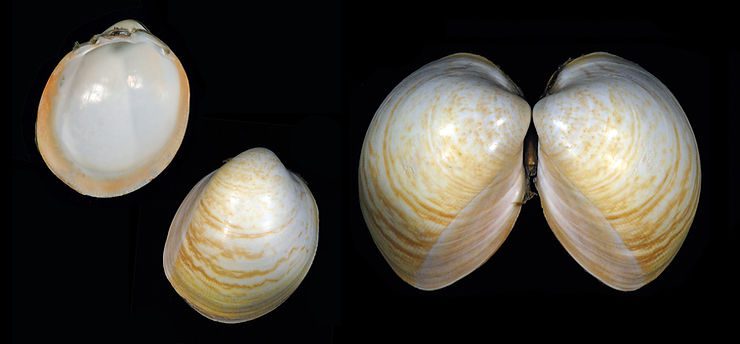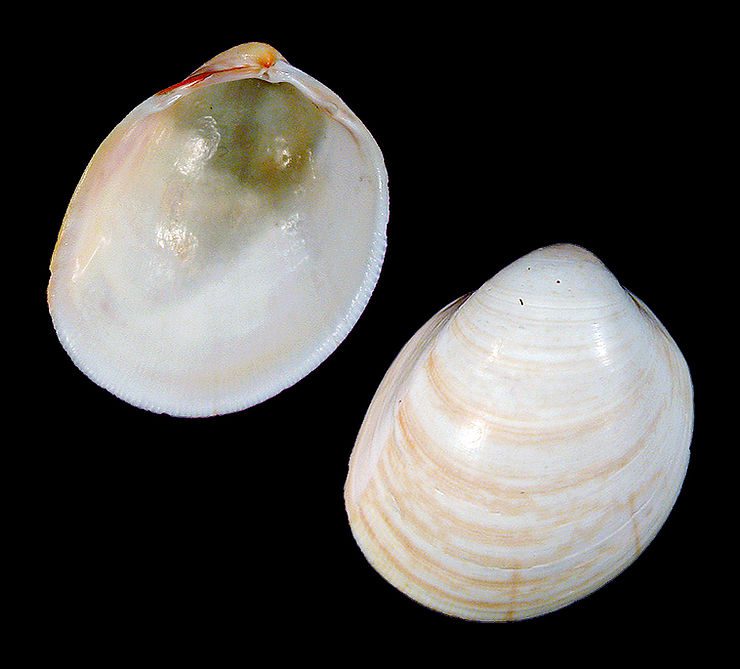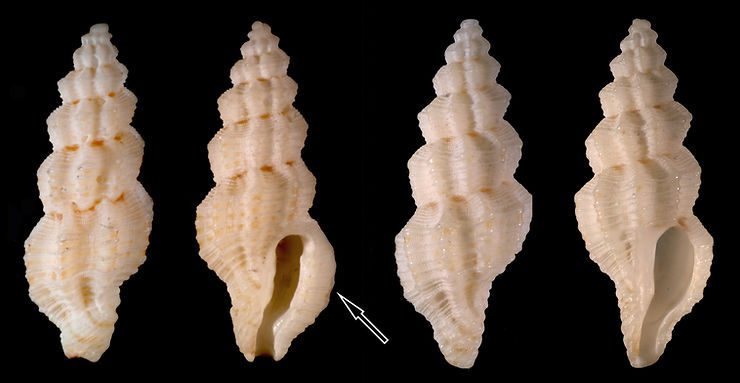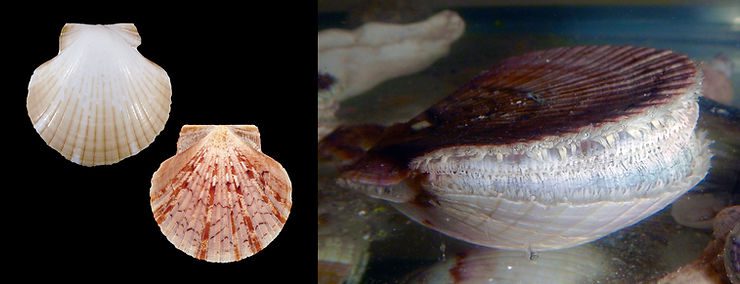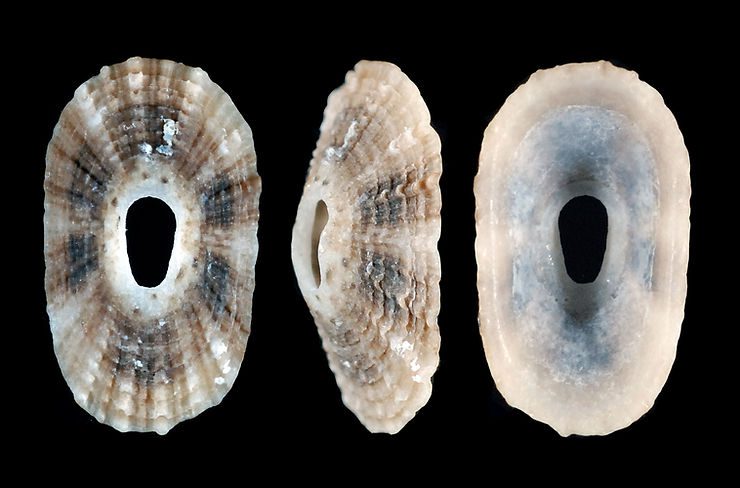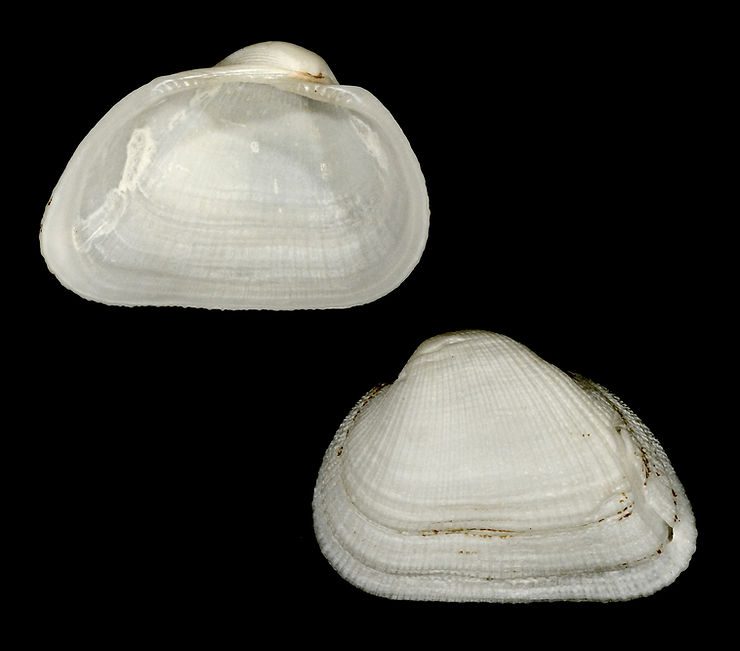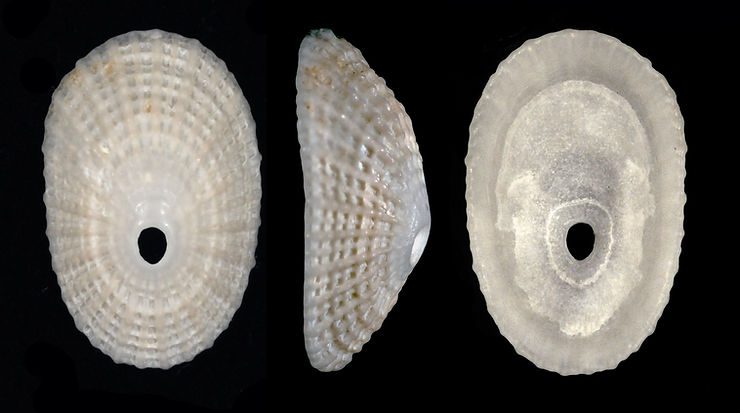
The Spiny Paper Cockle
The Spiny Paper Cockle, Papyridea lata (Born, 1778), belongs to family Cardiidae, as do its larger and heavier cousins, the Spiny, Egg and Giant Cockles. Spiny Paper Cockle shells are not uncommon on the beaches of Sanibel and Captiva. The shell is relatively thin, delicate, with radial (oriented from the beak toward the shell margin) ribs that bear fine, saw-tooth-like scales. The species is closely related to Papyridea soleniformis (also known as a Spiny Paper Cockle), differing from that by d

